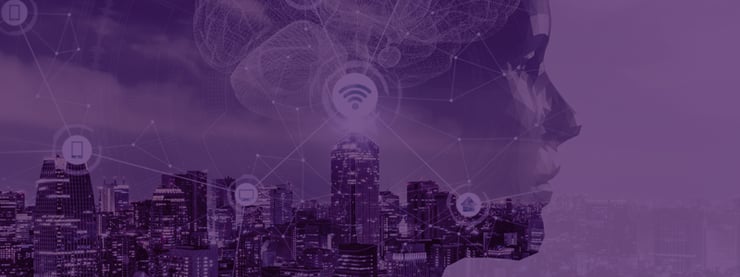The world in the grips of a pandemic. The COVID-19 Coronavirus has countries around the globe on lockdown. The speed with which it spread from modest origins in Asia to encompass the rest of the world is truly mind-boggling. It’s taken many of the world’s best healthcare systems time to catch up to the reality we’re now facing.
One thing the healthcare providers, and by extension the public they care for, have working in their favor is the fact that 21st-century emerging technology is playing a huge part in their healthcare model. How well healthcare systems are able to react is in large part due to their use of cutting-edge Health Technology. So we’re all on the same page, according to the WHO, Health Technology is:
…the application of organized knowledge and skills in the form of devices, medicines, vaccines, procedures and systems developed to solve a health problem and improve quality of lives.
Health Technology takes many forms today, ranging from modern vaccinations, mobile devices, remote monitoring devices, and even AI and advanced genome sequencing.
Cures Move At The Speed Of Technology
Compare the reaction to this Coronavirus outbreak to that of the last SARS outbreak in 2003. Back then, it took over 3 months for the genome of SARS to be mapped and work to begin on a vaccine. Now, it’s been less than a month and scientists have a full genome sequence and work on that vaccine is already underway. The culprit virus (SARS-CoV-2) was identified and a viable test was developed within a week of the first case coming to light.*
Beyond the astounding gene sequencing abilities of today’s labs, there are 3 primary technologies that are changing the public face of healthcare in crisis scenarios: Artificial Intelligence, remote connectivity, and chatbots.
AI Can Help Predict Outbreaks and Stop Their Spread
Emerging technology is taking a front seat in modern epidemiology. More specifically, AI-powered advanced real-time analytics, and the deep learning algorithms that are bringing that analytical prowess to the masses. In a medical setting, these algorithms can parse data from diverse sources such as news reports of animal outbreaks in rural areas, international travel trends, and up-to-the-minute airline data on top of the hospital records and regional health data.
The analytics can then predict the possibilities of an outbreak crossing to humans and narrow down a spread pattern so healthcare officials can begin putting in place procedures to halt that spread.
And in cases that defy this initial powerful analysis, AI is proving useful in building predictive models for transmission so that protocols can be put in place to help slow the spread of infectious agents like the new coronavirus. This creates lower overall cases and can shorten the time a given region is under attack.
Remote Technologies Save Lives by Limiting Exposure
There’s a simple proven fact at work — people trust people. And when it comes to their health, people trust their local doctor or clinic. Nowhere is this more apparent than during a crisis like the one we’re in the midst of. And it’s at these times that a robust digital footprint can help on many levels, not the least of which is having the ability to triage cases remotely.
For example, in recent years many facilities have deployed chatbots on their patient portals. While these interactive conversational interfaces serve many purposes, we’re going to focus on one — remote triage. A person can log in from the relative safety of home and ask the chatbot for help identifying symptoms. A chatbot that’s been updated properly to include COVID-19 symptoms will be able to parse the user’s questions, provide accurate analysis of their symptoms, and redirect to an appropriate healthcare resource.
Those resources may come in the form of a database of health information the patient can be sent to via links. Or it may mean being passed to a route-to-human queue to speak with a live nurse line for more complex diagnostics. Or it might even be a transfer to an automated emergency response system should the patient display worrying symptoms that warrant immediate in-person care.
Further Uses for Chatbots in Epidemic Situations
Enterprise chatbots are proving useful throughout the patient journey. At various points along the way, they can provide information to both parties (the patient and the healthcare provider), analyze responses and gauge the intent behind the words; or serve alerts for medication, appointments, etc.
Starting when a person is wary of those first sensations that they feel unwell. Rather than resort to the mixed bag of information that is a modern Google search, that person can log into their healthcare system’s patient portal and open the chatbot. By asking and answering a series of questions the bot can help determine the likelihood of their symptoms being caused by COVID-19 as opposed to the common cold or allergies, and provide appropriate links or transfer to a live nurse line to continue the conversation.
Then once a patient is diagnosed and released to return home, the chatbot (via an app on their mobile device) can be used to deliver medication reminders, set appointments for followup visits, or even act as a lifeline in the event that things take a turn by dispatching an ambulance at the touch of a button.
And the primary strength of conducting each of these steps via chatbot is that never once is a healthcare worker or member of the public put in any additional risk of exposure. By staying in quarantine while receiving personalized care of this magnitude, the patient knows they’re being looked after and at the same time, the nurses and doctors can rest assured that they’ve mitigated risk to others.
Containment of an Outbreak Requires Isolation
If there’s one last technological lesson to be taken from the current Coronavirus outbreak, it’s this—don’t underestimate the power of isolation, both good and bad. On the good side, isolation is the only proven way to stop the virus from spreading. At the same time, isolation can be detrimental to the health and well-being of many people.
The most vulnerable populations right now are the 65+ demographic and those with already compromised immune systems. These populations are already at an elevated risk for isolation and the mental side-effects that can come along with it. In these vulnerable groups, isolation has been shown to lead to dementia-like symptoms and worsening of other disease symptoms.
Enter Mobile Technology
Hospitals and assisted-living facilities that house Coronavirus patients and others on lock-down are equipping these folks with tablets so they can stay in touch with loved ones. They can also use the devices to communicate with friends via regular social networks or watch videos to pass the time while they fight off the virus. The sense of well-being that accompanies even a virtual visit from the grand-kids is doing wonders for these people’s quality of life and recovery rates.
*Update: Just since this post went into production a viable vaccine began testing in Seattle and a group of doctors in India have found a possible combination of existing anti-viral medication that may prove an effective stopgap.



